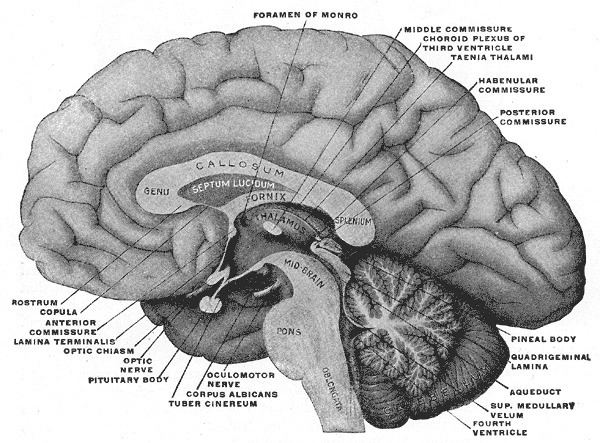Latin commissura posterior NeuroLex ID Posterior commissure TA A14.1.08.416 | NeuroNames hier-475 Dorlands/Elsevier c_49/12251723 FMA 62072 | |
 | ||
The posterior commissure (also known as the epithalamic commissure) is a rounded band of white fibers crossing the middle line on the dorsal aspect of the upper end of the cerebral aqueduct. It is important in the bilateral pupillary light reflex.
Its fibers acquire their medullary sheaths early, but their connections have not been definitively determined. Most of them have their origin in a nucleus, the nucleus of the posterior commissure (nucleus of Darkschewitsch), which lies in the central gray substance of the upper end of the cerebral aqueduct, in front of the oculomotor nucleus.
Some are probably derived from the posterior part of the thalamus and from the superior colliculus, whereas others are believed to be continued downward into the medial longitudinal fasciculus.
The posterior commissure interconnects the pretectal nuclei, mediating the consensual pupillary light reflex.
